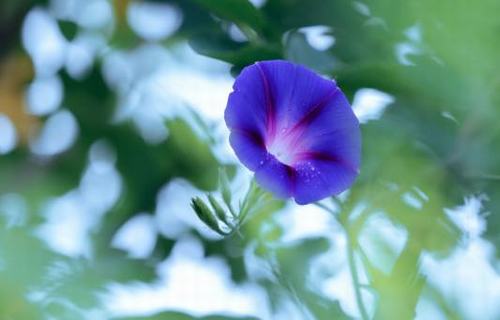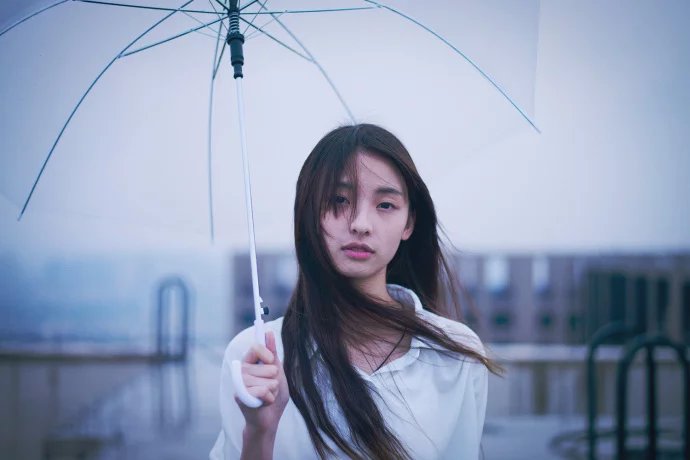
关于井冈山的导游词100字
土地革命战争时期,中国共产党在湖南、江西两省边界罗霄山脉中段创建的第一个农村革命根据地。
1927年10月,率领经“三湾改编”后的秋收起义部队到达宁冈,先后在宁冈、永新、茶陵、遂川等县恢复和建立了党组织,发展武装力量,开展游击战争,领导农民打土豪分田地,建立红色政权,实行工农武装割据,创立了党领导下的第一个农村革命根据地。
1927年大革命失败后,国内政治局势急剧逆转,中国革命进入低潮。
八七会议后,作为中央特派员开创井冈山革命根据地开创井冈山革命根据地到湖南改组省委,并发动和领导了湘赣边界的秋收起义,许多人纷纷响应,很多有志青年也加入了进来。
在攻打中心城市受挫后,以为书记的前敌委员会当机立断,毅然改变原定部署,决定到敌人控制比较薄弱的山区寻求立足地。
10月,率领湘赣边秋收起义的工农革命军到达罗霄山脉中段的井冈山地区,开展游击战争,进行土地革命,恢复和建立共产党的组织,建立革命政权和赤卫队。
与此同时,经过团结、教育、改造工作,将袁文才、王佐两支农民自卫军编入工农革命军。
至1928年2月底,包括宁冈全县,遂川西北部,永新、酃县、茶陵等县部分地区的井冈山革命根据地初步建成。
4月,朱德、陈毅率领工农革命军由湘南到达井冈山,同领导的工农革命军会师,合编为工农革命军第4军,后改称红军第4军。
1928年4月底,朱德、陈毅率领南昌起义保存下来的部队和湘南农军到达井冈山,和领导的工农革命军会师,成立了中国工农红军第四军。
5月,组成了以为书记的中共湘赣边界特别委员会;接着成立了袁文才任主席的湘赣边界苏维埃政府。
红军在赤卫队和人民群众配合下,接连打破了江西国民党军的多次“进剿”。
至6月,井冈山革命根据地拥有宁冈、永新、莲花3个县,和遂川、酃县、吉安、安福等县的部分地区。
之后,又打破了湘赣两省国民党军的两次“会剿”。
12月,彭德怀、滕代远率领红5军主力到达井冈山,同红4军会师。
此后,红军粉碎了敌人的多次“围剿”,根据地不断扩大。
1929年1月,、朱德率领红4军主力向赣南、闽西挺进后,留下一部红军坚持井冈山的斗争。
工农革命国要在井冈山落脚,不得到袁文才、王佐的允许是根本不可能的,而事情并不那样简单。
他们两人虽然参加过大革命,袁文才还是共产党员。
但他们对前来的这支工农革命军毕竟没有多少了解,还担心这支比他们力量大得多的部队上山会不会火并山寨,夺取他们原有的地盘,心中难免存有疑虑。
在古城会议期间,袁文才的代表曾表示:可以接济工农革命军一些给养,但请工农革命军另找高山。
怎样说服和争取这两支农民武装
选定先从已加入中国共产党的袁文才入手,再通过他去做王佐的工作。
他从袁文才的代表陈慕平的谈话中已经知道,他们最看重枪,人可以少一个,枪却不能少一支。
袁部有一百五六十人,只有六十支枪。
于是,向前委提议,准备一下子送他们一百支枪,将袁文才的全部人员都武装起来。
前委成员听到这个大胆的设想,有的人表示怀疑,余洒度坚决反对。
经过反复说明,才以多数通过。
古城会议后,从绿林重义气、多猜疑的特点出发,只带几个随员到宁冈大仓村去会见袁文才。
那是十月六日。
袁文才原来还有些怕,预先在林家祠堂埋伏下二十多人,二十多支枪。
见到只来几个人,他就比较放心了,埋伏的人始终没有出来。
见面中,说明是由江西省委介绍来找他们的,充分肯定他们劫富济贫的革命性,同时说到工农革命军品目前的困难。
双方谈得很投机。
当场宣布送给他们一百支枪,这很出袁文才的意料,也使他很受感动。
袁文才向表示,一定要竭尽全力帮助工农革命军解决各种困难,随即回赠给工农革命军六百块银元,并同意革命军在茅坪(这是一个有六十多户人家的村子)建立后方医院和留守处,答应上山做王佐的工作。
当然,问题并不是在一次见面中就能全部解决的。
袁文才当时对说:你们既然来了,就有福同享,有难同当,伤员和部队的粮油我管,但钱宁冈有限,还需要到酃县、茶陵、遂川一带去打土豪。
话讲得很客气,但显然已包含着推托的意思。
至于王佐的态度如何,那时还不知道。
解决这些问题,需要一些时间而不能操之过急。
因此,决定工农革命军主力在井冈山周围盘旋打游击,先向湘南的酃县方向挺进,筹些款子,熟悉周围环境探听南昌起义军进入广东后的情况,而把留守部门和伤病员安置在茅坪,请袁文才代管。
不久,又应袁文才的要求,派游雪程、徐彦刚、陈伯多等党员军事干部到袁文才部队里帮助他们进行政治和军事训练,工农革命军和袁、王部队的关系一天天密切起来了。
工农革命军到了井冈山后的第一件事,就是抓军队和地方的建党工作。
没有一个坚强有力的党组织形成核心,军队也好,根据地也好,都会松散无力,难以巩固和发展。
所以,把这件事看作一切的根本。
以导游身份写一段南昌至井冈山旅游景点之间的导游词
都和革命有关。
井冈山市革命圣地,是革命的摇篮,是第一个农村革命根据地。
简介井冈山。
。
。
大别山是中国革命的重要转折点。
然后接下去介绍大别山。
或者唱一首井冈山的歌曲,大家都知道的,引出你的讲解词。
然后说挺进大别山,有个电影吧,然后说你的讲解词。
。
。
求一篇井冈山观云海的导游词或简介 谢谢
朋友,大家好
也许在座的各位曾领略过武当幽静、黄山的秀美,也歌颂过泰山的雄伟、华山的险峻------的确,这些祖国的锦绣山都值得我们每个炎黄子孙去欣赏、去赞叹。
,在许多人的心中,却始终屹立着一座不朽的丰碑
泸定桥导游词和井冈山之间的词
This mountain has great significance in the annals of modern Chinese history for it was here that important events during the Chinese revolution took place. For those who are interested in the history of the revolution, it is possible to take a tour on . Jinggang that the people who against great odds strugg to establish the Peoples' Republic of China. . Jinggang is famo for the fact that it was here that forces by Zhu De joined those headed by Mao Zedong. Together, the combined forces of the (Chinese Communist Party) marched on to a victory that was to establish the new China under the Chairmanship of Mao Zedong. . Jinggang with its special features is quite different from the other sights, which makes a visit so rewarding.Mt. Jinggang is located on the common boundary of Jiangxi Province and Hunan Province, 352 kilometers (about 219 miles) southwest from the capital city - Nanchang. The mountain areas have a high center that is surrounded by a somewhat lower level and between them they present two obvio steps. At the point that these steps are divided the relative height is 500 meters (about 1640 feet). It was here that the famo Five Sentries (the five Red Army military strongholds built) stood overlooking the difficult terrain. Ather feature of the area is the many well-shaped basins among the ridges. It was these natural indentations that gave the mountain its name of Jing, meaning well and gang, meaning ridge - hence 'Jinggang'. Mt. Jinggang covers a fairly wide area but it is possible to arrange for a to ry you to the various separate sites of interest. These are t far from each other and the cost, which can be negotiated, will be reasonable.The first site of interest is Five-Fingers (Wuzhi) Peak; this is the highest in the Jinggang mountain range. The peak has the appearance of five extended fingers, hence its name. It is t only the highest point but is the largest and considered to be the most beautiful sight on the mountain. The steep peak extends in an imposing way from southeast to northwest. There is no path on which to climb and the unspoi virgin forest on the mountain is almost without any trace of human beings, which means it remains the home of rare animal species including bobtail monkeys, sambars and the yellow-stomached tragopan. Hence it is a secret world even now. Tourists may climb up to the Sightseeing Platform opposite, which is the best view point for seeing its majestic appearance. The huge peaks confront each other on two sides to form a valley. The Mt. Jinggang River twists and turns as it races through this valley. On the mountainside, and visible from a long distance, is a large waterfall that appears like a thin silk veil hanging from the sky. The group of lakes at the foot of Five-Fingers (Wuzhi) Peak is like a bright moon shining upon the boundless sea of clouds. Five-Fingers Peak is now the nature reserve of Jiangxi Province.The next site is the Dragon-Pond (Longtan) waterfalls also referred to as the Five-Dragon-Pond. When you enter this area long before you catch sight of the falls, you will hear the thunder-like roar of the water. Upper most is the Waterfall that drops down to the green and limpid Pond. The second is Lock-Dragon-Waterfall which spews out from the yellow cliff top into the Golden-Lock-Pond. The flow of water is not large but it is famed for what appears like a dragon trapped in it. The next are Pearl Waterfall and Pearl Pond. The waterfall rushes down from a 30 meter (about 99 feet) high cliff and is caught in its path by a large rock that causes the water to break into thousands of pearl-like droplets that glisten in the bright sunshine, hence its name. The forth are the Flying-Phoenix-Waterfall and Flying-Phoenix-Pond. At the bottom are the Maiden-Waterfall and Maiden-Pond. In addition to these spectacular falls there are unique peaks, rocks and an echo cliff to be found in the sightseeing area.Huangyang Jie is one of the five famous sentries. The well-known Defence of Huangyang Jie happened here and Mao Zedong's poem-Xijiang Moon was written to commemorate it. The monument to the Defence of Huangyang Jie is made up of an upright stele and a transverse stele, on which are ved the inscriptions of Mao Zedong and Zhu De. The old residences of the Red Army leaders remain here and many stories about the revolutionary period have come down to us. A trench is also preserved and many tourists put on Red Army attire to be photographed near the trench as a souvenir. The Up-Well (Shangjing) Red Army Mint in Huangyang Jie played a very important role during the Chinese revolution and helped the revolution base to cover the hard period at that time and collected experiences for the other bases. Some of the old equipment is kept there as well as the tools and materials used to make currency. Some Silver dollars (Yinyuan) were unearthed when the mint was restored and in the Currency Museum you can see these coins that were minted by the Red Army.Ciping, the center of the Mt. Jinggang area and red revolution base of China, is the place where many sights can be seen. Ciping is a mountain city and was the location of the highest leading department of the Mt. Jinggang revolutionary base. Now many places of interest in connection with the revolution can be seen here. Among these are the Mt. Jinggang Revolution Museum, the Tower of the Revolutionary Martyrs and military statues. Mt. Jinggang Revolution Museum was established here in 1959. The museum uses modern techniques of sound, light and models to illustrate the important events of the revolution. The main natural beauties in this area are the Southern Mountain Park in south Ciping and the Yicui Garden. On the way to the mountaintop there are five kiosks. There is a pentagon exhibition hall on the mountaintop decorated with the statuary of workers, peasants and soldiers.Pen-Rack-Mountain (Mt. Bijia) is famed for the steep peaks, unique rocks, old pines, sea of clouds, sunrise and the 5 kilometers (about 3.1 miles) patch of rhododendrons-the flower of Mt. Jinggang City. The blooming rhododendrons here can be called a wonder, every March or April thronged people came here to take photos for the beautiful natural sight.Maoping is located in the north foot of Huangyang Jie with many revolutionary sites. Here we have Bajiao Lou (a two-story building), those who are familiar with Chinese history may recall that Mao Zedong lived, worked and finished two splendid revolutionary works here. The first hospital of the base was established in Panlong Shuyuan (a classical academy in ancient China) of Maoping. You can visit the treatment room, medicine room and see some of the equipment used at the time. Another site that provided support to the base is a bedclothes factory which mainly produced the army clothes, hats and bullets bags. Each of these sites made a contribution to the achievements of the Red Army.The famous Monument and Memorial to the Joining of Forces on Mt. Jinggang is situated in the Dragon-city (Longshi) area, southwest of Huangyang Jie. The monument commemorates the achievement of Mao Zedong and Zhu De. The five exhibition rooms present the important event in Chinese history to tourists. The monument is 19.28 meters (about 21.1 yards) high, 5 meters (about 5.5 yards) long and 4 meters (about 4.4 yards) wide which indicates the date of join forces-May 4th, 1928. The two sides of the monument are inlaid with red marble, symbolizing two oriflammes, depicting the successful meeting of the two forces on Mt. Jinggang.Mt. Jinggang has an indispensable place in Chinese revolutionary history and offers a good insight into the history of the Chinese revolution. However, this is not only a Red Army tourist spot but is also an area of natural beauty that offers you plenty of scope for relaxation.



